We truly hope that you will thoroughly enjoy and appreciate this article we present you about 4 Wondrous United States Waterfalls. Geological features such as these represent some of the most spectacular of earth’s wonders. They also exist in an impressive variety.
To be certain, this region of the world, like most, possesses far more than just these few cascades. Some of them, however, are shared with another country. Herein, though, we are focusing our attention on those lying completely within the boundaries of this country.
Ramona Falls
Ramona Falls Facts
- Leading off this article about 4 Wondrous United States Waterfalls is the otherworldly site known as Ramona Falls.
- The breathtaking geological formation known by the simple name remains one of the most beautiful cascades known to man. Part of its extreme beauty comes from the fact that it also has one of the most distinctive appearances of any such formation.
- To many people, this marvel of Nature looks like someone blended a waterfall with the inside of a beehive. Not so coincidentally, the type of remarkable rock formation over which it flows many people know as a honeycomb structure.
- The first reported sighting of this stunningly beautiful waterfall in modern times, amazingly, did not occur until 1933. At that time, a Forest Service employee named John E. Mills came across it and named it. He did this while creating a trail.
- The incredible flow of water that he named Ramona Falls had, however, long been known by local populations of Native Americans. Today, the area may only be accessed via a hike along a rugged trail. This helps account for its being little known.
- Yet, the region in which the wonder of geology lies now forms part of the magnificent Pacific Coast Trail. In fact, the spot also represents the junction of two extremely popular hiking trails. These bear the names the Timberline and the Ramona Falls Trail.
Ramona Falls Physical Description
The truly breathtaking cascade referred to simply as the Ramon Falls never fails to dazzle those who see it. It does not do so due to seer physical size, though. That’s because this wonder of Nature has a total height that measures approximately 120 ft (37 m).
Yet this frequently overlooked, but nonetheless awesome fall also possesses other, highly respectable, and to some, surprising, statistics. Among these remains the fact that the gorgeous flow of water sits at an elevation that measures 3,560 ft (1,090 m) above sea level.
The staggering beauty of Ramona Falls derives from not simply its height. This only ranks as average, but it has remarkable structure. It’s composition of a series of interlocking, hexagonal-shaped columns creates a multi-layered visual effect that leaves one breathless.
Ramona Falls Location, Formation, and Nature
The awe-inspiring work of Nature named Ramona Falls formed in a truly picturesque, and somewhat out of the way, part of the world. This geological gem formed on the western side of what’s now known as Mount Hood, in the state of Oregon, in the United States.
More precisely, however, this beautiful cascade also finds itself in an area already so admired for its beauty that it’s garnered federal attention. The waterfall sits within the boundaries of the Mount Hood National Forest, though it remains little known to tourists.
A large component of the great beauty of the site remains the distinctive nature of the rocks over which the water flows. These formed as the result of an ancient volcanic flow, although even volcanologists differ as to exactly when in the past this action occurred.
At the time of the eruption, the flowing lava, largely basaltic in nature, slowly cooled. As it did so, it formed countless vertical hexagonal columns. Erosion later created the distinctive honeycomb pattern, over which the water flows with such beauty now.
The flow of water for the fabulous Ramona Falls itself originates from nearby Mount Hood, although rainfall obviously adds to this flow at times, and in varying amounts. There, the steady process of glacial melt provides a steady stream for a moderate flow.
Yosemite Falls
Yosemite Falls Facts
- Next up among our choices for inclusion on this list of 4 Wondrous United States Waterfalls is the remarkable Yosemite Falls.
- The truly magnificent and often breathtaking feature bearing the distinctive name forms the highest known waterfall in its part of the world. Although beauty remains relative, many also consider it one of the most beautiful features of its kind.
- This astounding work of geological forces also now forms a principal part of the Yosemite National Park. It comprises one of the key attractions of the park, in fact, especially in the spring, when the water flow usually reaches its peak levels.
- This wonder of Nature has also played an important role in local history. The base of the gorgeous formation once served as the location of the main village of the indigenous Native Americans of the valley, named the Ahwabneechee tribe.
- The comparatively quite large plunge pool at the base of the waterfall served as a central component of their lives, as well as their mythology. In their native language, the original name for what’s now known as Yosemite Falls was Cholock.
- Given its great natural beauty, this incredible location currently represents one of the most popular tourist attractions in the National Park. In fact, an astonishing average of 4 million people visit this park, and this cascade, each year.
Yosemite Falls Physical Description
While the marvelous visual appeal of Yosemite Falls doesn’t depend on sheer height alone, that characteristic nonetheless remains quite impressive. The total measured height of the stunning waterfall actually measures roughly 2,425 ft (739 m).
The breathtaking site further constitutes what’s known as a multi-tiered waterfall, being, in fact, composed of three primary divisions. These distinct, be equally remarkable, sections, man now calls the Upper Fall, the Middle Cascade, and the Lower Fall.
Purely by itself, the mind-blowing section logically named the Upper Fall plunges approximately 1,430 ft (440 m). This portion alone stands apart as one of the twenty highest waterfalls on earth. The forces of nature, however, did not merely stop there.
The Middle Cascades account for drop of 675 ft (206 m). This section actually comprises five smaller, individual falls. The Lower Falls drop the final 320 ft (98 m), while the large plunge pool at its base remains surrounded by a highly treacherous jumble of talus.
Yosemite Falls Location, Distinctiveness, and Dangers
The truly gorgeous Yosemite Falls justifiably remains considered one of the most beautiful sites in its region. This geological beauty lies situated within the Sierra Nevada mountain range, in the portion of the country comprising the state of California.
Each year, unless rainfall totals in the surrounding region surpass the usual, a most surprising event occurs. To the amazement of those who experience it, the usually impressive flow of water ceases entirely during either the late summer or fall.
Rock climbers occasionally take this opportunity to scale the normally inaccessible rock face at this time. However, this remains extraordinarily dangerous. One scattered thunderstorm could send a surge of water over the falls, plunging the climbers to their deaths.
The local Ahwabneechee tribe hold a very specific legend concerning what’s now known as Yosemite Falls. According to that belief, the plunge pool at the base of the falls is inhabited by the spirits of several witches, collectively known as the Poloti.
Havasu Falls
Havasu Falls Facts
- The third entry into this compendium of 4 Wondrous United States Waterfalls is the breathtakingly beautiful site known as Havasu Falls.
- Without doubt, the mesmerizing formation easily ranks as one of the most beautiful waterfalls in the world. It also goes by the name of Havasupai Falls. By either name, the site also remains one of the most difficult falls in the world to access.
- That lamentable fact, however, serves to provide it with at least a measure of protection, to preserve it in its natural state. In point of fact, two very specific factors currently serve to limit access to this marvel of Nature, aiding its preservation.
- The site sits on tribal land belonging to a small group of Indigenous Peoples. Understandably, the tribe strictly regulates the number of visitors to the location. Access to the site remains limited to those acquiring a permit from local authorities.
- In addition to this requirement of man, the very nature of the surrounding terrain also serves to make it difficult to access. Although this makes it more difficult for those who appreciate Nature to view it, this fact can certainly be respected.
- The local topography makes it nearly impossible to gain access to the site from the ground without the knowledge of the indigenous inhabitants of the region. Its sheer natural beauty gives this awesome wonder of Nature a truly powerful allure.
- This trait has garnered breathtaking Havasu Falls international attention several times, in some ways. With the permission and cooperation of local authorities, its beauty has been featured in both a Hollywood movie, and a music video.
Havasu Falls Physical Description
The fame of the truly stunning Havasu Falls derives purely from its natural beauty. This notoriety, although certainly well-deserved, has no basis in its physical size. This holds true due to the fact that the waterfall represents no more than an average sized cascade.
This status pertains to both its height and width. For one thing in particular, the waterfall itself consists of a single stage, much like the vast majority of similar features scattered throughout the world. In its case, the water plunges a total of about 100 ft (30 m).
It also does so over a series of several vertical cliffs. These cliffs have a composition primarily consisting of dark reddish sandstone. Without a doubt, the most visually striking feature of Havasu Falls remains the breathtaking color of the water itself.
This occurs due entirely to the fact that the underlying rock strata contains high concentrations of calcium carbonate. This natural compound slowly but steadily distills into the flow of water, continually providing that water with an astounding aquamarine color.
Havasu Falls Location, Formation, and History
Surprisingly, Havasu Falls sits within another larger, and far better known, natural marvel. That other wonder of Nature is none other than the Grand Canyon itself. The waterfall, therefore, formed in what now constitutes the geographically magnificent state of Arizona.
Along with the canyon, this waterfall forms another of the great natural wonders of North America. The stunning cascade formed on what became tribal land of the native American tribe, the Havasupai. The tribe has lived at the site for more than 800 years.
This astonishingly beautiful cascade also formed through a unique, but highly effective, combination of two processes. These factors in its creation consisted of both slow erosion over time, and rapid erosion due to the occurrence of flash floods in the area.
The high levels of calcium carbonate in the water also leaves deposits as it flows along. Over time, these minerals built up in several places, forming small but magnificent travertine steps. The frequent flash floods in the region often changes these, however.
Sometimes one or more of these beautiful but very delicate features becomes reduced due to the force of the flood, or even demolished, to be reformed later. Because of the occurrence of the same flash floods, the nature of the waterfall itself often changes.
Prior to one powerful flood, Havasu Falls flowed in one broad sheet. Since then, the form of the flow has changed on several occasions. Currently, it flows in a single sheet of water, whose temperature remains a near-constant 70 degrees Fahrenheit (20 Celsius).
Grand Falls
Grand Falls Facts
- The final location contained within this compilation of 4 Wondrous United States Waterfalls is the highly distinctive Grand Falls.
- The fully appropriate term for this cascades serves as one of the common names generally applied to this visually stunning waterfall. This geological wonder also, however, goes by the equally apt other name of the Chocolate Falls, for some people.
- For the moment, it remains undetermined who among the various explorers to the area first encountered the cascade. The local Native American population, however, had understandably long known of the existence of this marvel of Nature.
- For the latter centuries of its existence, the land the marvelous cascade formed on became shared by members of the Navajo Nation. In point of fact, these proud Indigenous People still have legal control of, and maintain, the immediate region.
- In a pleasantly surprising twist, the very nature of the surrounding environment aids in its protection and preservation. The part of the region in which it sits possesses an extremely rugged terrain, limiting the number of its visitors.
- Further protecting it, access to Grand Falls remains allowed only by a special permit, and with the express knowledge and permission of the Navajo Nation officials. In fact, even experienced hikers are advised against visiting the site without local guides.
Grand Falls Physical Description
Spotting the truly breathtaking formation known to man as Grand Falls makes several things immediately clear. To the amazement of those who have the good fortune to visit it, this site remains incredible for not just its beauty, but for its sheer size as well.
Certainly, its sheer physical dimensions qualify it as an impressive specimen of waterfall. Although its exact width naturally varies with the amount of water flowing at any one time, this measurement averages a highly respectable 200 ft (61 m).
The overall height of the visually impressive formation, meanwhile, also never fails to impress the visitor or researcher. Given that this characteristic of the beautiful cascade measures approximately 185 ft (56.4 m), that’s not at all surprising, though.
The magnificent Grand Falls also remains renowned for yet another characteristic. That’s the fact that its waters remains almost constantly extremely muddy. This state is so strong, in fact, that it often prompts some to compare the color to chocolate, hence the other name.
Grand Falls Location, Origin, and Distinctiveness
The visually stunning, and simultaneously fascinating, Grand Falls formed in a region of the globe already well known for its beauty. That’s because this wonder, like a multitude of others, formed in what now constitutes the visually stunning state of Arizona.
It also formed a very long time ago. Current estimates, based on geological records, indicate that it formed roughly 150,000 years ago. In point of fact, this formation took place in a portion of the region currently given the. literally, colorful name of the Painted Desert.
At that time, the eruption of an ancient volcano formed the nearby Merriam Crater. Lava from the eruption flowed into what’s now named the Colorado River and formed a natural dam. The resulting rerouting of the river eventually created Grand Falls.
During the dry season, the flow rate reduces to a slow trickle and sometimes even ceases entirely. During the winter, snowmelt creates an almost steady flow. Sporadic torrential rains also create an enormous flow for brief periods when they occur in the region.
4 Wondrous United States Waterfalls
We sincerely hope that you have completely enjoyed this article about 4 Wondrous United States Waterfalls. This region further boasts countless others, many of equal splendor and majesty. We invite to to peruse our pages, and learn of some of them.
Sadly, though, some of these wonders, and others, now faces various dangers. These include such factors as climate change, altering their flows. In other cases, mankind reduces or even eliminates some of them, due to alteration of the landscape, such as building dams.
Check out our other articles on Earth’s Many Magical Moths, 6 Mysterious Natural Phenomena, 7 Herbaceous Plants of Central America, The Mighty Tornado, Earth’s 7 Rarest Butterflies



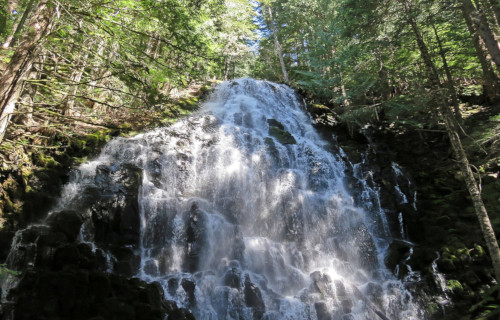
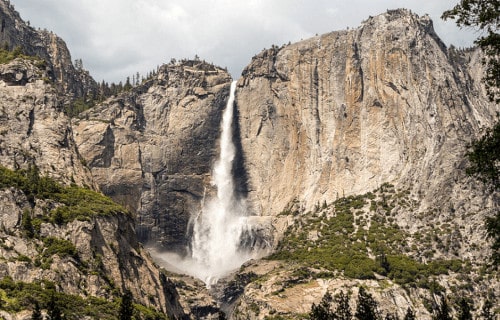

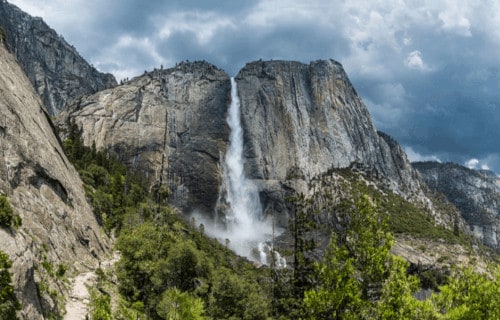

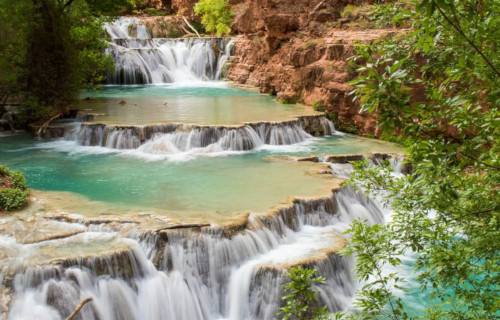


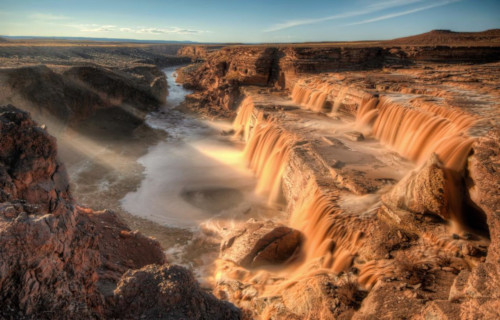









Leave a Reply